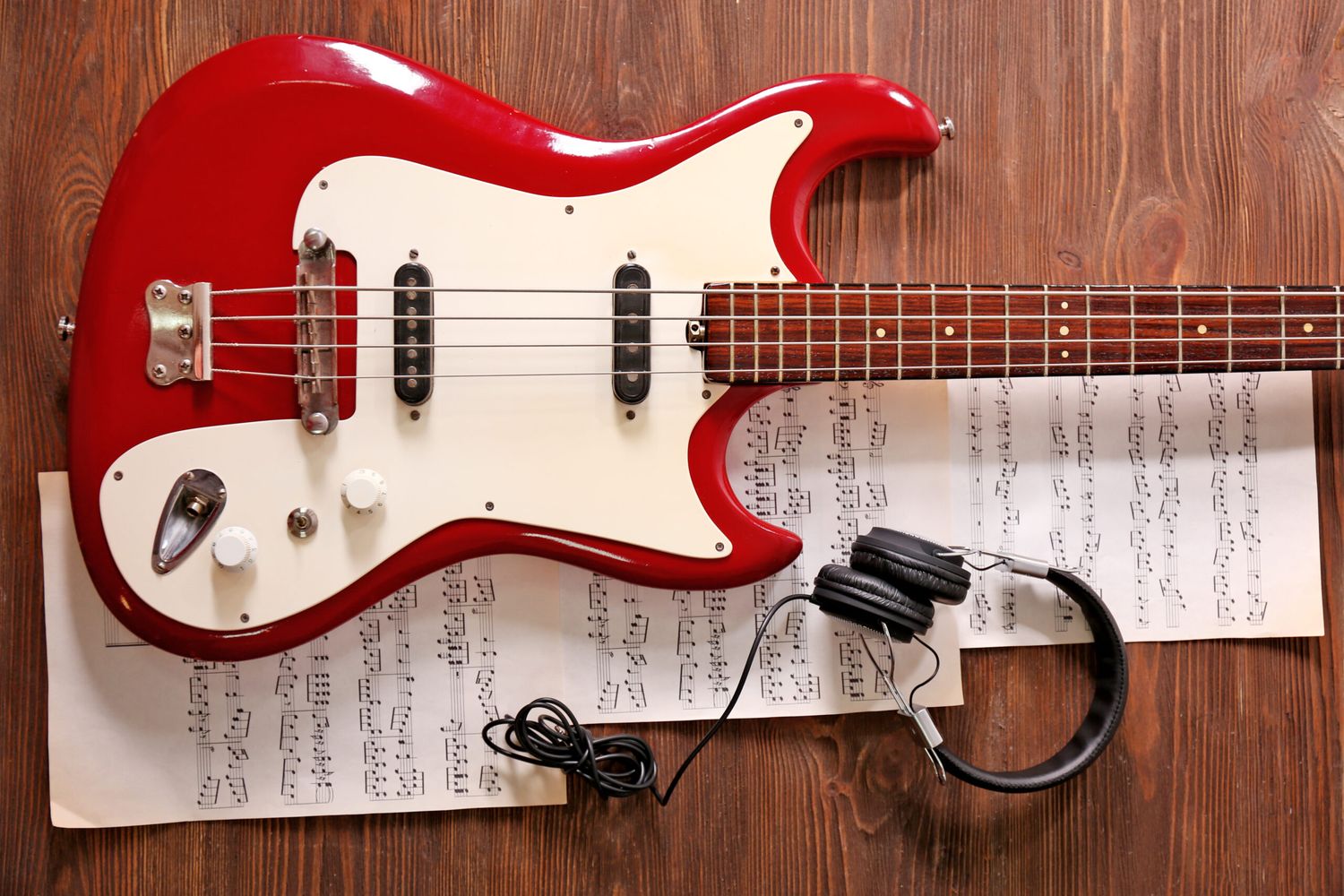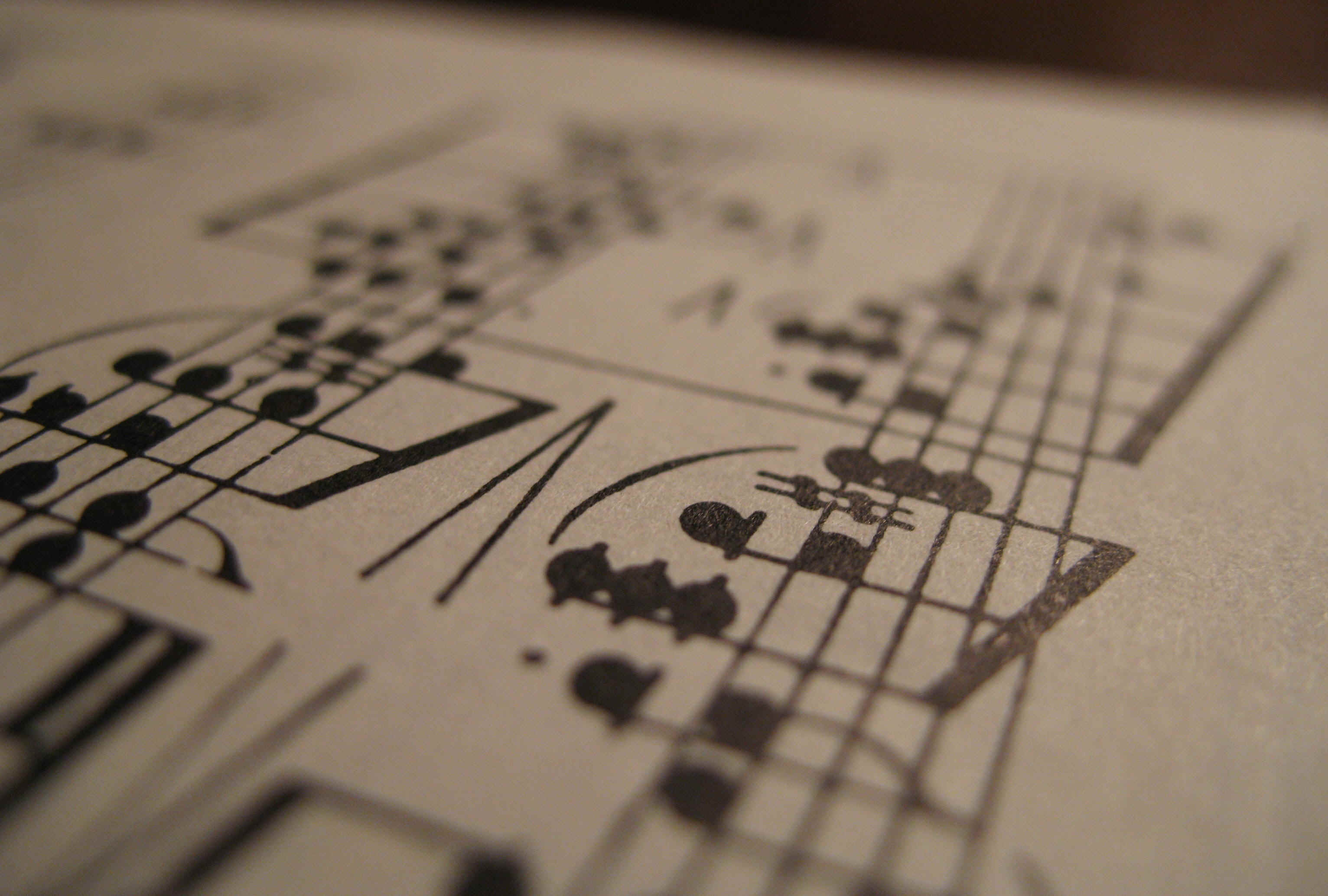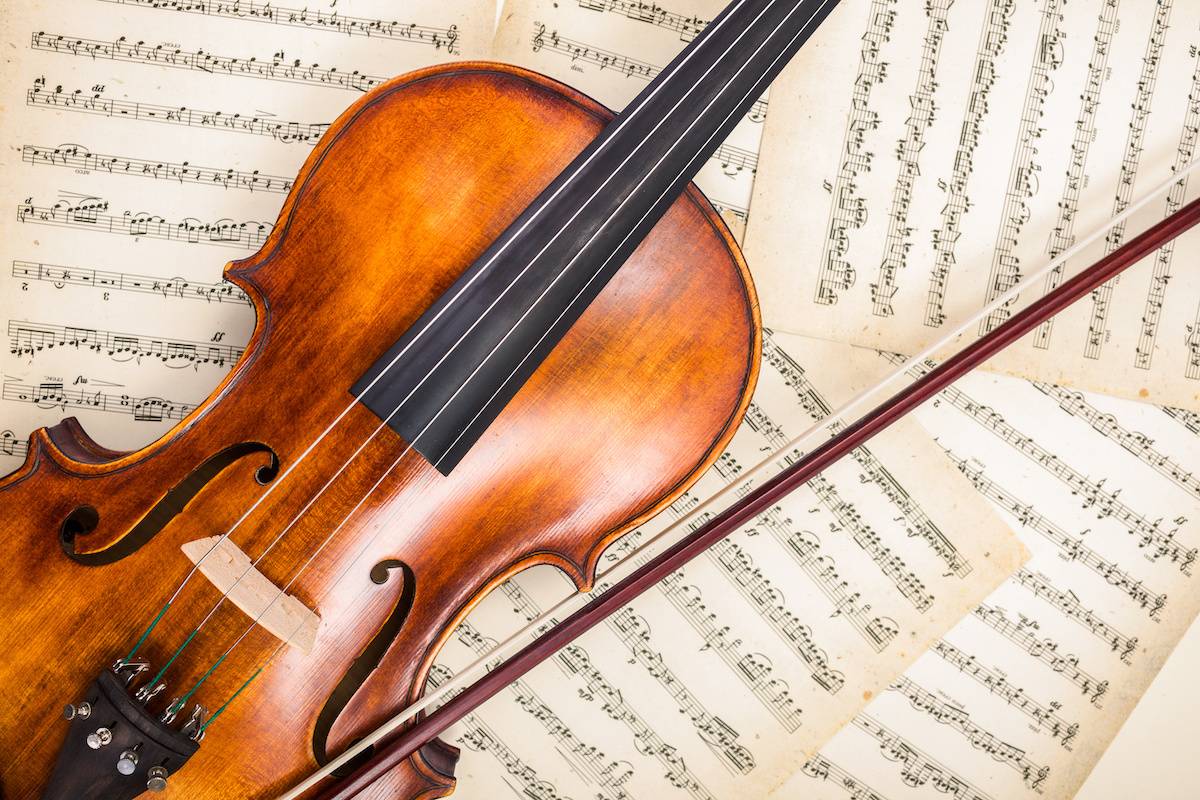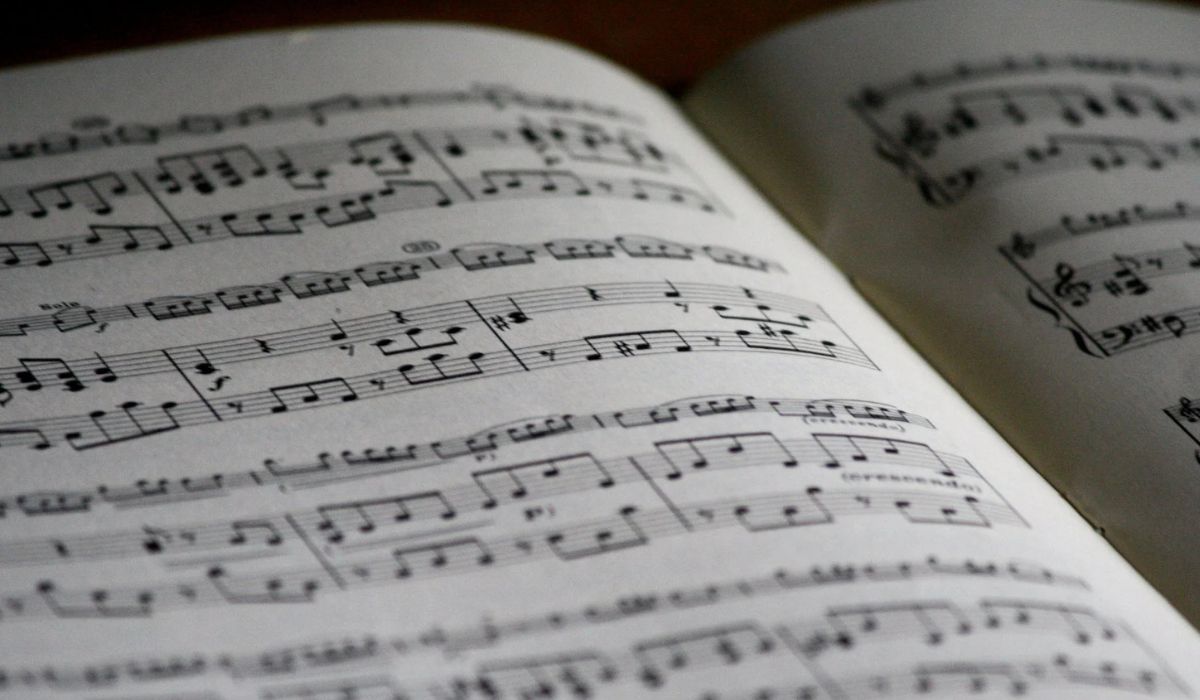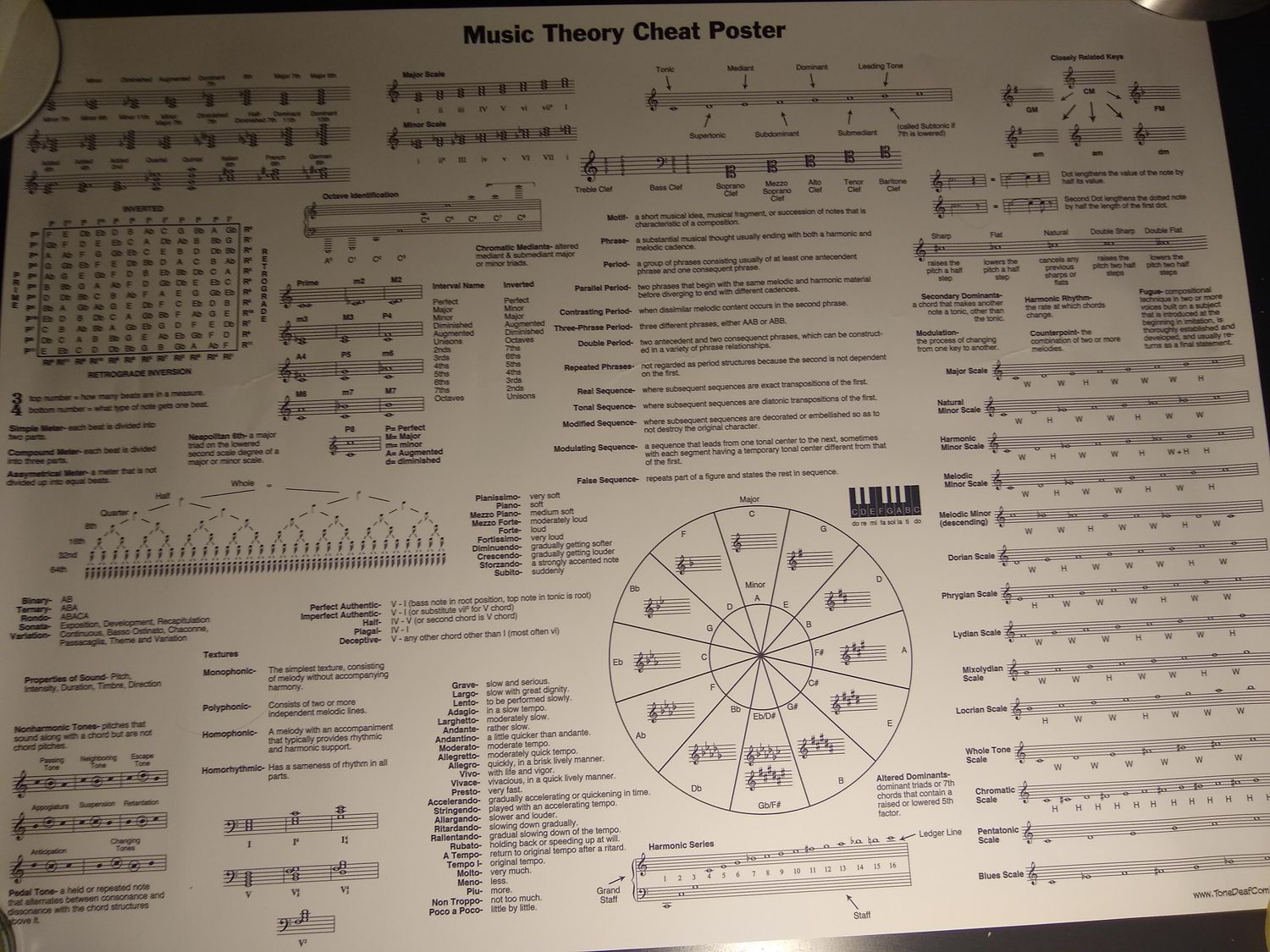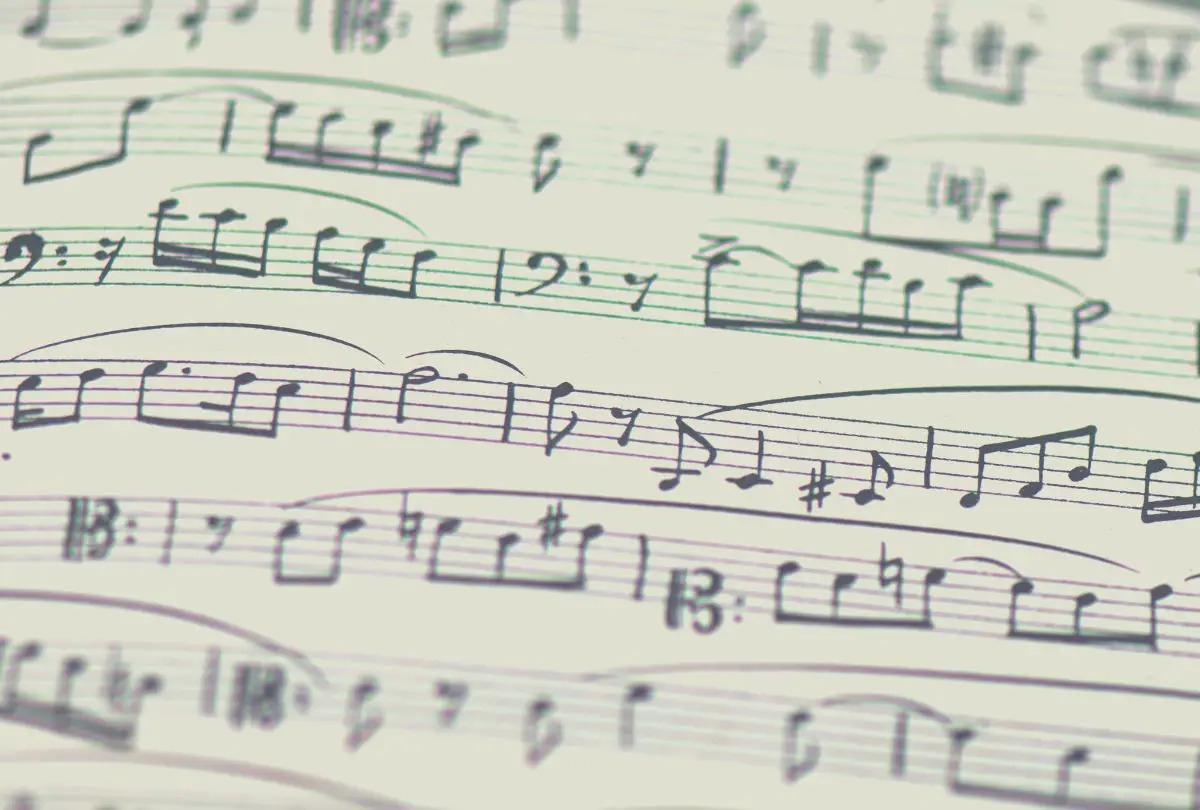Home>Production & Technology>Music Theory>Where To Start When Learning Music Theory


Music Theory
Where To Start When Learning Music Theory
Published: February 1, 2024
Discover the best way to begin your journey in learning music theory. From basic concepts to advanced techniques, gain a solid foundation in music theory and unlock your musical potential.
(Many of the links in this article redirect to a specific reviewed product. Your purchase of these products through affiliate links helps to generate commission for AudioLover.com, at no extra cost. Learn more)
Table of Contents
Introduction
Music theory is a fundamental aspect of understanding and appreciating the art of music. It provides a framework for analyzing and composing music, enabling musicians to create harmonious melodies and captivating compositions. Whether you are a beginner musician, an aspiring songwriter, or simply have a deep love for music, learning music theory can greatly enhance your musical journey.
By gaining a solid foundation in music theory, you will be able to comprehend the intricate relationships between musical elements, such as melody, harmony, rhythm, and structure. This knowledge will empower you to better appreciate various genres of music, from classical compositions to contemporary hits.
Furthermore, understanding music theory can significantly improve your ability to play an instrument or sing. It provides you with the tools to read and interpret sheet music, allowing you to learn new songs more efficiently. Moreover, it enables you to compose your own music, tapping into your creativity and expressing yourself through the universal language of music.
Learning music theory also fosters collaboration among musicians. It establishes a common language and understanding, enabling musicians to communicate effectively during rehearsals and performances. By understanding concepts such as chords, scales, and key signatures, you can easily connect and play with other musicians, creating harmonies that resonate and captivate audiences.
In this comprehensive guide, we will delve into the core concepts of music theory, taking you on a journey from the basics to more advanced topics. We’ll explore notes and scales, building chords, understanding key signatures and the circle of fifths, as well as delve into intervals, harmonic progressions, and music notation. Along the way, we’ll provide practical applications of music theory to help you see how it can be applied in real-world situations.
Whether you are a musician, a songwriter, or simply an avid music lover, learning music theory will deepen your understanding and appreciation of the beautiful art form that is music. So, let’s dive in and discover the fascinating world of music theory!
Why Learn Music Theory?
Learning music theory offers numerous benefits for musicians of all levels and genres. It provides a strong foundation that enhances your musical abilities and allows you to communicate effectively within the world of music. Here are some compelling reasons why learning music theory is crucial:
1. Musical Comprehension:
Music theory helps you understand the structure, patterns, and relationships within music. By studying concepts such as scales, chords, and intervals, you can decipher the underlying logic behind compositions. This knowledge allows you to interpret musical pieces with depth and nuance, gaining a holistic understanding of the music you play or listen to.
2. Songwriting and Composition:
Music theory is invaluable for songwriters and composers. It provides a toolbox of techniques and strategies that can be applied to create compelling melodies, harmonies, and chord progressions. Understanding music theory empowers you to express your musical ideas and emotions in a deliberate and effective way, resulting in well-crafted compositions.
3. Improved Performance Skills:
When you have a solid grasp of music theory, reading and interpreting sheet music becomes easier. You can quickly understand the key signatures, time signatures, and complex notation, facilitating smoother and more accurate performances. Additionally, knowing the theory behind scales and chords helps you navigate the fretboard or keyboard with confidence, improving your instrumental proficiency.
4. Collaboration and Communication:
Learning music theory enables you to communicate and collaborate more effectively with other musicians. By understanding common terminology, chord progressions, and song structures, you can easily communicate your musical ideas and contribute meaningfully to group performances. This shared understanding fosters a deeper sense of musical connection and can elevate your musical collaborations to new heights.
5. Versatility and Adaptability:
Music theory provides a universal language that transcends genres and styles. By mastering the fundamentals, you can effortlessly traverse diverse musical genres and adapt to different musical contexts. This versatility expands your repertoire, broadens your musical horizons, and enables you to appreciate and play a wide range of music.
Whether you aspire to be a professional musician, desire to compose your own music, or simply want to deepen your appreciation and understanding of music, learning music theory is essential. It equips you with the knowledge and skills to unlock your musical potential and brings newfound richness to your musical experiences.
Basic Concepts in Music Theory
Before diving into the intricacies of music theory, it’s important to familiarize yourself with some basic concepts that form the foundation of this discipline:
1. Notes:
Notes are the building blocks of music. They represent specific pitches, which are the frequencies a musical sound produces. In Western music, notes are typically represented by letters from A to G, with variations indicated by sharps (#) or flats (b). Understanding notes is crucial for reading sheet music and playing musical instruments.
2. Scales:
Scales are sequences of notes arranged in ascending or descending order. They provide the basis for melody and harmony in music. The most common scale in Western music is the major scale, which consists of a specific pattern of whole steps and half steps. Other commonly used scales include the minor scale, pentatonic scale, and blues scale.
3. Chords:
Chords are combinations of three or more notes played simultaneously. They form the foundation of harmony in music. Triads are the most basic chords, consisting of three notes stacked in thirds. Common types of chords include major chords, minor chords, diminished chords, and augmented chords. Understanding how chords are constructed and their relationships within a key is essential for creating harmonies and chord progressions.
4. Key Signatures:
Key signatures indicate the key of a piece of music and the corresponding scales and chords used. They are represented by sharps or flats appearing at the beginning of a musical staff. The key signature determines the tonal center and provides a framework for interpreting the music. Understanding key signatures helps musicians navigate musical compositions and play in different keys.
5. Time Signatures:
Time signatures indicate the rhythmic structure of a piece of music. They consist of two numbers: the top number represents the number of beats in each measure, while the bottom number indicates the type of note that receives one beat. Common time signatures include 4/4 (common time), 3/4 (waltz time), and 6/8 (compound time). Understanding time signatures is crucial for maintaining the rhythmic accuracy and feel of a piece of music.
By familiarizing yourself with these basic concepts in music theory, you will gain a solid foundation to build upon. These concepts provide the scaffolding to understand the complex relationships and structures within music. As you deepen your knowledge, you’ll be able to analyze and appreciate music on a deeper level, and ultimately, apply this understanding to your own musical creations and performances.
Understanding Notes and Scales
Notes and scales are essential elements of music theory, providing the building blocks for melody and harmony. Understanding how notes and scales work is crucial in developing a strong foundation in music theory. Let’s explore these concepts in more detail:
Notes:
In Western music, the notes are represented by letters from A to G. These letters indicate specific pitches, or frequencies, of sound. The notes are organized in an ascending order, with each higher note having a higher pitch. The distance between two consecutive notes is called a half step.
The notes can also be altered by adding sharps (#) or flats (b). A sharp raises a note by a half step, while a flat lowers a note by a half step. For example, the note A# is a half step higher than A, and the note Bb is a half step lower than B.
Scales:
A scale is a sequence of notes arranged in a specific pattern. Scales provide the framework for melody and harmony in music. The most common scale in Western music is the major scale, which consists of a specific pattern of whole steps and half steps.
The major scale follows the pattern of whole step, whole step, half step, whole step, whole step, whole step, half step. For example, in the key of C major, the notes C, D, E, F, G, A, B, and C form the C major scale.
Other commonly used scales include the minor scale, which has a different pattern of whole and half steps, the pentatonic scale, which consists of five notes per octave, and the blues scale, which adds a “blue” note to the pentatonic scale.
Understanding scales is important because they provide the melodic and harmonic framework for music. By knowing the scales, musicians can create melodies and harmonies that are pleasing to the ear and fit within a particular musical context.
When learning music theory, it is essential to practice playing and hearing different scales. This helps internalize the patterns and intervals between notes, allowing for greater fluency and improvisational skills. Exploring different scales opens up a wide range of musical possibilities and expands your musical vocabulary.
Understanding the relationship between notes and scales is fundamental to developing your musical ear and enhancing your improvisation and composition skills. By delving into the world of notes and scales, you unlock the potential to explore melodies, harmonies, and musical expressions in a meaningful and intentional way.
Building Chords
Chords are fundamental to creating harmony in music. They add depth and richness to melodies, giving music its emotional and expressive qualities. Understanding how chords are constructed is a crucial aspect of music theory. Let’s explore the process of building chords:
Triads:
The most basic type of chord is called a triad. Triads are made up of three notes played together. These notes are stacked in intervals of thirds. There are four types of triads: major, minor, diminished, and augmented.
A major triad consists of a root note, a major third interval (four half steps above the root), and a perfect fifth interval (seven half steps above the root). For example, in the key of C, a C major triad would consist of the notes C, E, and G.
A minor triad, on the other hand, has a minor third interval (three half steps above the root) and a perfect fifth interval. In the key of A minor, an A minor triad would include the notes A, C, and E.
A diminished triad has a minor third interval and a diminished fifth interval (six half steps above the root). In the key of B, a B diminished triad would consist of the notes B, D, and F.
An augmented triad, on the other hand, has a major third interval and an augmented fifth interval (eight half steps above the root). In the key of F, an F augmented triad would include the notes F, A, and C#.
Seventh Chords:
Building upon triads, seventh chords add an additional note to create a more complex and colorful sound. Seventh chords consist of four notes – the root, third, fifth, and seventh – and they are commonly used in various styles of music.
The most common type of seventh chord is the major seventh chord. It has a major triad with an added major seventh interval (eleven half steps above the root). In the key of G, a G major seventh chord would consist of the notes G, B, D, and F#.
Minor seventh chords feature a minor triad with an added minor seventh interval. In the key of E minor, an E minor seventh chord would include the notes E, G, B, and D.
Other types of seventh chords include the dominant seventh chord, which has a major triad and a minor seventh interval, and the diminished seventh chord, which consists of a diminished triad with an added diminished seventh interval.
Understanding how chords are constructed allows you to analyze and build complex harmonic progressions, create interesting chord voicings, and compose captivating melodies. By exploring different chord types and their relationships, you can unlock a world of harmonic possibilities and add depth to your musical compositions and performances.
Key Signatures and Circle of Fifths
Key signatures play a crucial role in music theory as they indicate the tonal center and provide a framework for interpreting musical compositions. Understanding key signatures and their relationship to each other is essential for musicians. The Circle of Fifths is a visual representation that helps explain the relationship between different key signatures. Let’s explore these concepts in more detail:
Key Signatures:
A key signature is a set of sharps or flats placed at the beginning of a musical staff to indicate the key of a piece of music. It tells musicians which notes are raised or lowered throughout the composition. Key signatures simplify reading and performing music, as they eliminate the need to notate accidentals (sharps or flats) repeatedly.
In major keys, the key signature represents the arrangement of whole and half steps in the major scale. For example, a key signature with one sharp indicates that the composition is in the key of G major, where the F is raised to F#. Similarly, a key signature with three flats indicates that the composition is in the key of Eb major, where the B, E, and A are all lowered by a half step.
In minor keys, the key signature represents the harmonic or melodic minor scale. The same set of sharps or flats used in the major key signatures applies to their relative minor keys. For example, if a piece is in the key of E minor, which is the relative minor of G major, it would have one sharp in the key signature (F#).
Circle of Fifths:
The Circle of Fifths is a visual representation that organizes the twelve major and minor keys in a circular pattern based on the relationship of fifths. Beginning with C major, each key signature is situated clockwise on the circle, with each key being a fifth higher than the previous one.
The circle visually demonstrates the relationship between key signatures. Moving clockwise around the circle, each new key adds one sharp or moves one flat. For instance, the key of G has one sharp (F#), while the key of D has two sharps (F# and C#). On the other hand, moving counterclockwise, each new key adds one flat or moves one sharp. For example, the key of F has one flat (Bb), while the key of Bb has two flats (Bb and Eb).
The Circle of Fifths is a valuable tool for musicians to understand key relationships, modulations, and chord progressions. It provides a visual reference for analyzing and composing music, aiding in transposing melodies and harmonies into different keys.
By mastering key signatures and understanding the Circle of Fifths, musicians can effortlessly navigate through different keys, transpose music, and create harmonically rich compositions. These concepts provide a solid foundation for exploring the vast world of music and its diverse harmonic possibilities.
Intervals and Harmonic Progressions
Intervals and harmonic progressions are essential concepts in music theory that shape the melodic and harmonic aspects of music. Understanding intervals helps musicians identify and describe the distance between two notes, while harmonic progressions provide the framework for chord sequences and create musical tension and resolution. Let’s delve into these concepts:
Intervals:
An interval is the distance between two pitches, whether they are played simultaneously (harmonic interval) or consecutively (melodic interval). Intervals are measured in terms of steps and can be classified as either major, minor, perfect, augmented, or diminished.
The most basic interval is a unison, which occurs when two identical pitches are played together. Moving up or down the musical scale, intervals are classified as major or minor depending on their distance. For example, the interval between C and D is a major second, while the interval between C and C# is a minor second.
Perfect intervals are those that have a characteristic sound and are considered highly consonant. Perfect intervals include the unison, fourth, fifth, and octave. Augmented intervals are larger than the corresponding major or perfect intervals, while diminished intervals are smaller.
For example, the interval between C and G is a perfect fifth, while the interval between C and G# is an augmented fifth.
Harmonic Progressions:
Harmonic progressions refer to the movement of chords in a piece of music. They create a sense of tension and resolution, providing the overall harmonic structure of a composition. Common progressions include the I-IV-V progression in major keys and the i-iv-v progression in minor keys.
Chord progressions are often represented using Roman numerals, with uppercase letters representing major chords and lowercase letters representing minor chords. The numerals indicate the scale degree of the root of the chord. For example, in the key of C, the I-IV-V progression would consist of the chords C, F, and G.
Harmonic progressions can also include secondary dominants, borrowed chords, and modal interchange, which add complexity and variation to the chord sequences.
Understanding intervals and harmonic progressions accelerates your ability to compose melodies, build effective chord progressions, and analyze the harmonic structure of pieces of music. By exploring the relationships between intervals and incorporating harmonic progressions, you can create captivating and emotive music that engages and resonates with listeners.
Music Notation
Music notation is a standardized system of writing and representing musical elements such as pitch, rhythm, dynamics, and articulation. It allows musicians to read and interpret a piece of music and play it accurately. Understanding music notation is essential for musicians of all levels. Let’s explore the basics of music notation:
Staff and Clefs:
The staff is a set of horizontal lines and spaces that serve as the foundation for music notation. The lines and spaces represent different pitches. The treble clef (or G clef) is commonly used for notating higher-pitched instruments like the piano, flute, and violin. The bass clef (or F clef) is often used for lower-pitched instruments like the bass guitar, cello, and tuba.
Notes and Rests:
Notes represent specific pitches, while rests indicate periods of silence within a musical composition. Notes are written on the staff and are depicted by different shapes placed on specific lines or spaces. The duration of a note is determined by the shape of the note, such as whole notes, half notes, quarter notes, eighth notes, and so on. Rests, on the other hand, indicate silence and have corresponding durations.
Time Signatures and Measures:
Time signatures indicate the organization of beats in a musical composition. The top number represents the number of beats per measure, while the bottom number indicates the type of note that receives one beat. Measures are the spaces between vertical lines on the staff and contain a specified number of beats determined by the time signature. Time signatures help establish the rhythmic structure of a piece of music.
Dynamics and Articulation:
Dynamics refer to changes in volume throughout a composition. Common dynamic markings include piano (soft), forte (loud), crescendo (gradually getting louder), and decrescendo (gradually getting softer). Articulation marks indicate how a note should be played, such as staccato (short and detached), legato (smooth and connected), or accent (emphasis on a note).
Other Notation Symbols:
In addition to the basics, music notation includes various symbols and markings to provide further instructions to musicians. These symbols can indicate things like repeats, key changes, tempo markings, trills, and many more. Familiarizing yourself with these symbols and their meanings enhances your ability to accurately perform a piece of music.
By understanding music notation, you gain the ability to read sheet music, interpret musical elements accurately, and reproduce a musical piece as intended by the composer. It provides a common language for musicians to communicate and share musical ideas effectively. Whether you are a performer, composer, or music enthusiast, mastering music notation is a valuable skill that unlocks the vast world of music.
Practical Applications of Music Theory
Music theory has practical applications that extend beyond the realm of academia or theoretical understanding. It provides musicians with a set of tools and knowledge that can be applied in various ways to enhance their musical abilities and experiences. Let’s explore some of the practical applications of music theory:
1. Improvisation:
Music theory serves as a foundation for improvisation. By understanding scales, chords, and harmonic progressions, musicians can confidently explore and create musical ideas on the spot. Whether in jazz, blues, or other improvisational genres, music theory empowers musicians to navigate through different chord changes, create melodic variations, and engage in dynamic musical conversations.
2. Composition and Songwriting:
Music theory is an invaluable tool for composing original music and writing songs. It provides the knowledge to craft compelling melodies, harmonies, and chord progressions that evoke emotions and tell stories. With an understanding of music theory, composers and songwriters can make deliberate creative choices, experiment with different structures, and construct well-balanced and coherent musical pieces.
3. Ear Training:
Music theory aids in developing a musician’s ear and improves their ability to recognize and identify musical elements by ear. By understanding scales, intervals, and chords, musicians can train their ears to recognize these sounds in songs and transcribe or reproduce them accurately. This allows for more efficient learning of music, harmonizing with other musicians, and playing by ear.
4. Arranging and Orchestration:
Music theory plays a vital role in arranging and orchestrating music. Knowing the principles of harmony, counterpoint, and instrumentation allows musicians to create compelling arrangements for different combinations of instruments. By understanding how different instruments can blend together and complement each other, musicians can create lush and well-balanced musical textures.
5. Analysis and Interpretation:
Music theory enables musicians to analyze and interpret the compositions of others. By examining the structure, chord progressions, and melodic motifs, musicians can gain a deeper understanding of the composer’s intentions and effectively express the music’s emotional content in their performances.
These practical applications of music theory demonstrate its relevance and importance in the musical journey of every musician. By harnessing its concepts and tools, musicians can unlock their creative potential, broaden their musical horizons, and enrich their experiences in playing, composing, and interpreting music.
Conclusion
Music theory is a powerful and essential aspect of the world of music. It provides the framework for understanding the intricate relationships between melody, harmony, rhythm, and structure. By learning music theory, musicians can deepen their appreciation and understanding of music, enhance their performance skills, and unlock their creative potential.
From understanding the basics of notes and scales to building chords, exploring key signatures and the circle of fifths, and delving into intervals and harmonic progressions, music theory offers a comprehensive toolkit for musicians to navigate and explore the vast realm of music.
Practical applications of music theory, such as improvisation, composition, arranging, and analysis, empower musicians to express their creativity, communicate effectively with other musicians, and continuously grow and evolve as artists.
Whether you are a beginner musician starting your musical journey or an experienced player looking to deepen your understanding, embracing music theory will provide you with the skills and knowledge to approach music with confidence, express yourself authentically, and connect with others on a deeper level through the universal language of music.
So, let the enchanting world of music theory be your guide as you embark on a remarkable journey of exploration and creativity, expanding your musical horizons and invigorating your passion for the art of music.

